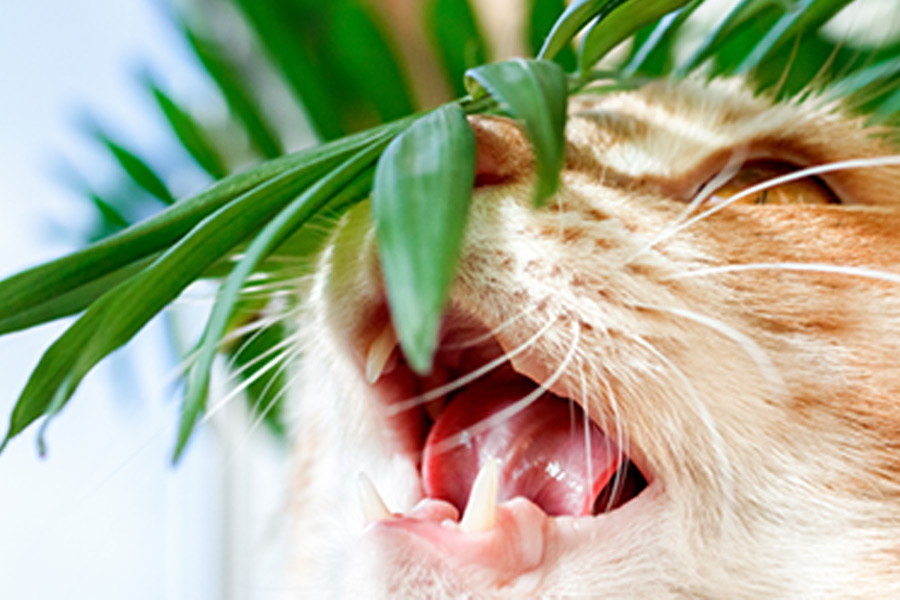Plant Pathology
-

House and garden plants may be toxic to cats and dogs. This visual guide will help pet owners learn which plants are safe, as even common plants can be deadly.
Brenda Jackson and Ellen M. Bauske
|
-

C 1253
Phony Peach Disease
This fact sheet covers phony peach disease: History, symptoms, disease cycle, and management.
Phillip M. Brannen and Kendall Anderson Johnson
|
-

The 2021 Southeast Regional Caneberry Integrated Management Guide covers topics such as pesticide stewardship and safety, insect and disease control, pre-transplant and transplant operations, fungicide and insecticide efficacy comparisons and spray schedules, weed management, wildlife damage, and more. Recommendations are based on information from the manufacturer’s label and performance data from research and extension field tests. Because environmental conditions and grower application methods vary widely, suggested use does not imply that performance of the pesticide will always conform to the safety and pest control standards indicated by experimental data. This publication is intended for use only as a guide. Specific rates and applications methods are on the pesticide label, and these are subject to change at any time.
Phillip M. Brannen
|
-

This report provides research and extension results for trials conducted by the University of Georgia Vegetable Team and its collaborators in 2021. Contributing authors include county and regional faculty as well as specialists from UGA’s horticulture, plant pathology, crop and soil sciences, and entomology departments. All research has been supported by the Georgia Vegetable Commodity Commission.
Timothy Coolong
|
-

2019 plant disease losses, including control costs, amounted to an estimated $832 million. The value of the cropsused in this estimate was approximately $6.64 billion, resulting in a 13.3% relative disease loss across all crops included in this summary. The estimated values for most crops used to compute these disease losses are summarized in the UGA Center for Agribusiness & Economic Development, 2019 Georgia Farm Gate Value Report (AR-20-01). Some estimates for fruits, ornamentals, and turf rely on the specialist’s knowledge of the industry and industry sources for information.
Elizabeth L. Little
|
-

This publication provides Southeast-specific information on approved National Organic Program (NOP) disease and pest management options for blueberry production and addresses the issues most commonly encountered under the unique growing conditions of the Southeast U.S. This publication is not intended to provide all details on organic blueberry production, although it does include the production methods that reduce the impact of plant disease and pest issues. Emphasis in an organic system should be on cultural practices that reduce disease and pest pressure rather than pesticide applications. NOP-approved pesticides are usually less efficacious than conventional products. The pesticide label is the law and supersedes any information on pesticide use contained in this guide. Because environmental conditions and grower application methods vary widely, suggested use does not imply that performance of the pesticide will always conform to the pest control standards indicated by experimental data.
Elizabeth L. Little and Phillip M. Brannen
|
-

This report provides research and extension results for trials conducted by the University of Georgia Vegetable Team and its collaborators in 2020. Contributing authors include county and regional faculty as well as specialists from UGA’s horticulture, plant pathology, crop and soil sciences, and entomology departments.
Juan Carlos Diaz-Perez, Timothy Coolong, Bhabesh Dutta, Andre Luiz Biscaia Ribeiro da Silva, and Abolfazl Hajihassani
|
-

2018 plant disease losses, including control costs, amounted to an estimated $844 million. The value of the crops used in this estimate was approximately $6,268 million, resulting in a 13.5% relative disease loss across all crops included in this summary.
The estimated values for most crops used to compute these disease losses are summarized in the UGA Center for Agribusiness & Economic Development, 2018 Georgia Farm Gate Value Report (AR-19-01). Some estimates for fruits, ornamentals, and turf rely on specialist’s knowledge of the industry and industry sources for information.Jason H. Brock, Elizabeth L. Little, Phillip M. Brannen, Ganpati Jagdale, and Bhabesh Dutta
|
-

This annual publication includes a report of 2019-20 onion research variety trials and Extension activity at the University of Georgia College of Agricultural and Environmental Sciences. The report contains the results of research awarded by the Vidalia Onion Commodity Commission.
Juan Carlos Diaz-Perez, Jason Lessl, Bhabesh Dutta, Andre Luiz Biscaia Ribeiro da Silva, and Angelos Deltsidis
|